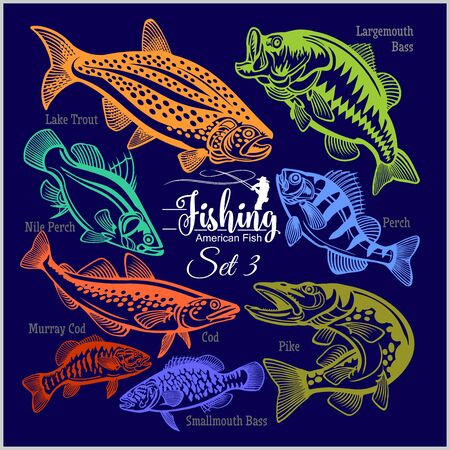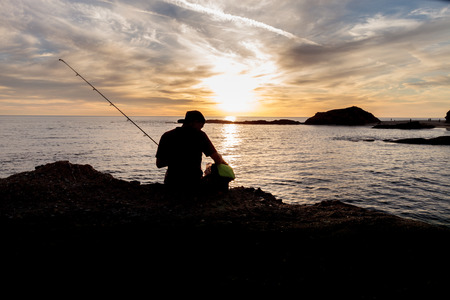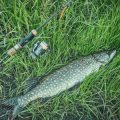Understanding Wreck Fishing in the UK
Wreck fishing holds a special place in British angling, blending maritime heritage with the thrill of discovery. All around the UK coastline, shipwrecks—both ancient and modern—dot the seabed, providing rich habitats for a variety of marine species. These underwater structures are not only echoes of Britain’s seafaring past but also hotspots for fish such as pollock and ling. The allure of wreck fishing lies in its unpredictability and the skill required to navigate these submerged environments safely. For many beginners, targeting pollock and ling offers an ideal introduction to this discipline; both species are renowned for their fighting spirit and can be found in abundance around wreck sites. In fact, seasoned anglers often recount tales of epic battles with these fish among rusting hulls and scattered cargo. Embracing this unique aspect of British sea fishing means tapping into a tradition that’s as much about respect for the sea as it is about landing a trophy catch.
Essential Tackle and Gear
If you’re just starting out wreck fishing for Pollock and Ling in British waters, getting your gear right is half the battle. British wrecks are notorious for testing both angler and tackle, so it’s crucial to invest in equipment that can stand up to the challenge. Below, you’ll find a breakdown of recommended rods, reels, lines, and terminal tackle specifically tailored for UK conditions.
Recommended Rods and Reels
For British wreck fishing, a sturdy boat rod rated between 20-30lb is ideal—offering enough backbone to haul big Ling from snags without sacrificing bite detection for Pollock. Pair this with a robust multiplier reel that holds at least 300 metres of braid, fitted with a smooth drag system. Popular choices among UK anglers include well-known brands such as Shimano and Penn.
| Rod Type | Recommended Action | Length |
|---|---|---|
| Boat Rod (20-30lb) | Medium-Fast | 7’–8’ |
| Uptide Rod (optional) | Fast | 9’–10’ |
Line Selection: Braid vs Mono
Braid is the preferred choice for most British wreck anglers due to its low stretch and sensitivity—helping you detect subtle takes from Pollock in deep water. Opt for braid in the 30-50lb class; however, always add a strong mono or fluorocarbon leader (40-60lb) for abrasion resistance around jagged wreckage.
| Main Line Type | Poundage | Purpose |
|---|---|---|
| Braided Line | 30-50lb | Sensitivity & Deep Drops |
| Mono/Fluorocarbon Leader | 40-60lb | Abrasion Resistance |
Terminal Tackle Essentials
You’ll need an assortment of strong hooks (size 4/0–6/0), heavy-duty swivels, and assorted booms or anti-tangle rigs. Lead weights between 8oz and 1lb are standard to keep your bait anchored in tidal flows common around UK wrecks. For Pollock, try shads or jelly worms rigged on leadheads; for Ling, nothing beats fresh mackerel or squid strips fished on simple running ledgers.
Must-Have Local Baits
Mackerel is king when targeting both species—either as strip baits or whole fillets. Squid is another reliable option, especially when targeting larger Ling lurking close to the seabed. Don’t overlook ragworm or sandeel if available locally; they can prove irresistible to Pollock on tougher days.
| Bait Type | Target Species | Best Presentation Method |
|---|---|---|
| Mackerel Strip/Fillet | Pollock & Ling | Running Ledger/Shad Rig |
| Squid Strip/Whole | Ling (larger) | Ledger Rig/Whole Bait Rigged On Hook Lengths |
| Sandeel/Ragworm | Pollock (finicky days) | Baited Jig Head/Uptiding Rig |
This combination of robust tackle and proven local baits will give any beginner the confidence—and capability—to start unlocking the secrets of Britain’s best wreck marks.

3. Locating Productive Wrecks
Finding the right wreck is half the battle when targeting pollock and ling around British shores. For beginners, understanding how to use local charts, electronics, and community tips can dramatically increase your odds of success. Start with a reliable Admiralty chart or well-reviewed digital mapping app; these resources will highlight known wreck locations and help you plan safe drifts. Pay particular attention to marks within the 30–80 metre depth range, as both pollock and ling favour these depths for feeding.
Modern fishfinders and GPS units are invaluable in pinpointing structure beneath the waves. Use sonar to identify promising features—look for sharp rises, scattered debris fields, or dense baitfish shoals hugging the wreckage. Don’t be afraid to experiment with different drift lines or anchor positions until you find where the fish are holding; subtle changes in tide or current can make all the difference.
Equally important is tapping into the vast knowledge base of local anglers and charter skippers. Pop into a nearby tackle shop or join regional fishing forums—most seasoned wreck hunters are happy to point newcomers towards productive areas, especially if you show respect for local etiquette and conservation efforts. Ultimately, blending technology with traditional know-how gives you the best chance of finding those prime pollock and ling hotspots that British seas are famous for.
4. Techniques for Success
Wreck fishing for pollock and ling in British seas calls for a blend of the right tactics, timing, and presentation. Whether you’re casting off the Cornish coast or drifting above an East Coast wreck, mastering these essentials will boost your catch rate and help you make the most of every session.
Jigging Versus Baiting: Choosing Your Approach
Both jigging and baiting can be highly effective when targeting pollock and ling. Understanding when to deploy each technique is key:
| Technique | Best For | Recommended Gear | Top Tip |
|---|---|---|---|
| Jigging | Active pollock hunting, especially over midwater wrecks | 30-50lb braid, 150-250g metal pirks or soft shads | Use sharp upward sweeps to mimic fleeing prey |
| Baiting | Ling on the seabed; less aggressive fish | Strong trace, size 6/0–8/0 hooks, whole squid or mackerel strips | Keep bait close to the structure for better results |
Tide Timing: When to Fish for Best Results
Tide has a massive impact on both fish activity and your ability to present baits effectively. Generally, the best periods are during the last hour of the flood tide and the first hour of the ebb. Slack water can see predators move away from cover, while running tides help carry scents and lures further.
Pace Yourself with the Tides
- Flood Tide: Ideal for active pollock feeding in midwater layers.
- Ebb Tide: Ling are more likely to emerge from deeper recesses after slack water.
- Slack Water: Good for precise drops onto tight wreck marks.
Bait and Lure Presentation Tips for UK Wrecks
The way you present your offering can mean the difference between a successful day and going home empty-handed. For jigging, ensure your lure is working just above the structure—too high and you miss feeding fish; too low and you risk snags. With baits, long flowing traces allow natural movement, but always check your bait is fresh and securely hooked.
- Lure Action: Quick jerks attract pollock, while slower lifts tempt ling.
- Bait Preparation: Remove excess skin from mackerel strips to release more scent into the current.
- Tackle Choices: Use fluorocarbon leaders around sharp wreckage for extra abrasion resistance.
Tuning these techniques to local conditions and adjusting throughout your session will give you a real edge on UK wrecks—so keep an eye on how fish respond, adapt quickly, and enjoy putting these skills into practice on British waters.
5. Safety and Sustainability
Wreck fishing for Pollock and Ling in British seas is exhilarating, but safety and sustainability must always come first. The unpredictable nature of UK waters, especially around notorious wreck sites, demands that every angler prioritises proper preparation. Always check the weather forecast before heading out, wear a well-fitted life jacket, and ensure all safety equipment—such as flares, radios, and first aid kits—is in good working order. Never fish alone if possible, and inform someone ashore about your plans and expected return time.
Understanding Catch Limits
British fisheries regulations are designed to protect marine stocks for future generations. As a beginner, you must familiarise yourself with local catch limits for both Pollock and Ling. These limits can vary by region and season, so consult the latest guidelines from the Marine Management Organisation (MMO) or your local harbour authority. Adhering to these rules not only avoids hefty fines but also supports sustainable fish populations.
Responsible Fishing Practices
Respecting the marine environment is fundamental to the British angling ethos. Practise catch and release when possible, especially for undersized or non-target species. Use barbless hooks to minimise harm during release, and handle fish carefully with wet hands to preserve their protective slime coat. Avoid discarding litter or unwanted tackle at sea—bring everything back to shore for proper disposal.
Supporting Marine Conservation
The health of our wrecks and reefs depends on responsible behaviour from all sea-goers. Participate in local conservation initiatives where possible, such as beach cleans or citizen science projects tracking fish stocks. By acting as stewards of our coastal waters, we help ensure that the thrill of wreck fishing for Pollock and Ling remains available to future generations across Britain’s stunning seascapes.
6. Local Etiquette and Community
Unpacking the Unspoken Rules
Wreck fishing for pollock and ling in British seas is as much about respecting local customs as it is about landing a trophy catch. The unwritten code starts with courtesy at the slipway—queue patiently, lend a hand when needed, and always greet fellow anglers with a friendly nod or a “morning”. These small gestures go a long way in building trust and mutual respect among regulars. When you’re out on the water, maintain a respectful distance from other boats, especially those already anchored over productive marks. Cutting across someone’s drift or dropping anchor too close can be seen as poor form and will quickly mark you out as an outsider.
Camaraderie Among Wreck Fishers
Despite the competitive edge that comes with targeting big pollock and ling, camaraderie runs deep in the UK wreck fishing scene. Sharing a brew and swapping stories of near misses or monster hauls are part and parcel of the day. Don’t hesitate to ask for advice, but remember to listen more than you speak—locals appreciate humility and genuine interest over bravado. If you’re invited to join in on a post-session pint at the harbour pub, seize the opportunity; this is where friendships are forged and knowledge is freely shared.
Spirit of Friendly Competition
The thrill of beating your personal best or winning a club competition adds spice to every trip, but the true spirit lies in fair play. Respect boundaries during informal matches—no poaching spots or bending rules. Celebrate others’ successes as you would your own; applause for a cracking fish is never out of place. In time, you’ll find that being known as a considerate and sportsmanlike angler opens doors to new marks and insider tips from seasoned veterans.
Respecting the Environment
Lastly, British wreck fishing communities take pride in looking after their patch of sea. Always take litter home, handle fish carefully (especially undersized ones), and avoid damaging wrecks with careless anchoring. By observing these standards, beginners not only gain acceptance but also help preserve this unique tradition for generations to come.

